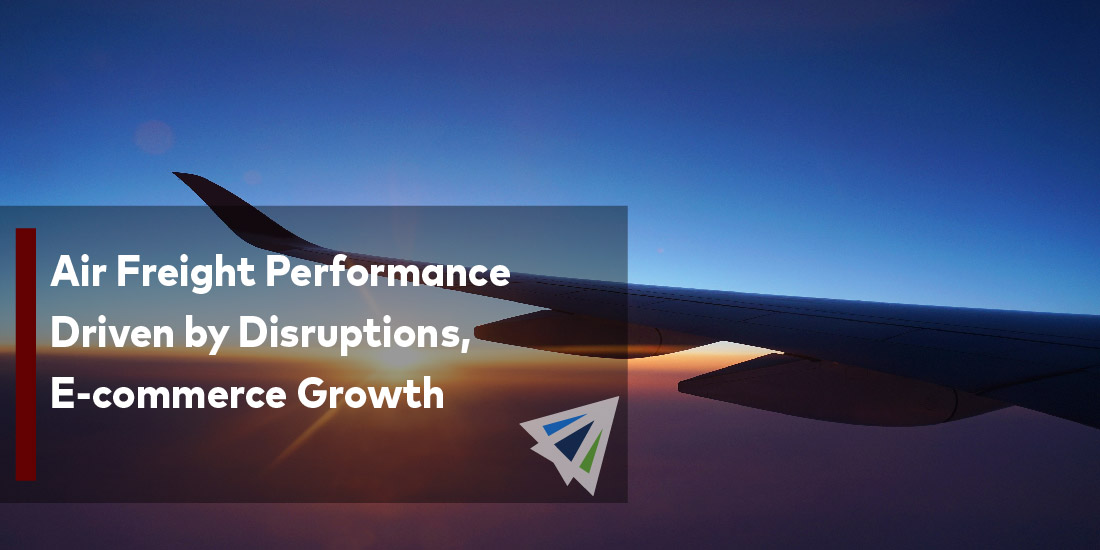The need for e-commerce and disruptions in maritime shipping have driven an extraordinary boom in activity in the worldwide air freight industry, especially in the Asia-Pacific area. It is anticipated that this trend, which experienced notable rises in June, will last well into 2025 and significantly alter the logistics and transportation industries.
Increased Demand for Air Freight in Asia-Pacific
The demand for air freight increased significantly in June in the Asia-Pacific region, above the global average. Both the International Air Transport Association (IATA) and the Association of Asia Pacific Airlines (AAPA) noted double-digit growth for the area. While IATA reported a 17% increase, AAPA reported a 16.4% year-over-year increase in freight tonne kilometers (FTK). The sustained increase in e-commerce shipments and export activity in the area is blamed for this outstanding result.
Air freight volumes across important trade lines were greatly boosted by the combination of increased export activity and disruptions in maritime transportation, as observed by AAPA’s director general, Subhas Menon. He stressed that the freight markets are anticipated to continue growing in the second half of the year, even in the face of geopolitical risks.
Effects of Disruptions on Maritime Shipping
Increases in aviation freight have been largely driven by disruptions in maritime commerce. Businesses are increasingly turning to air freight as a more dependable option to assure timely delivery of goods because ports are congested and experiencing delays. This change has been especially noticeable along important trade routes that link Asia with other continents.
IATA reported notable expansion in a number of trade channels in June. Comparing the same month of previous year to the trade route between Africa and Asia, there was a startling 37.5% increase. Significant growth was also seen in the flows between Europe and Asia, the Middle East and Asia, and Asia itself, with rises of 20.3%, 15.1%, and 21%, respectively. These numbers highlight the increasing reliance on air freight to get around problems with maritime shipping.
Increasing Air Freight Charges
Rates for air freight are rising in tandem with the increasing demand. In the week starting on July 15, WorldACD recorded a 2% increase in air freight rates week over week. Comparing the same period last year to this one, the average rate for exports from the Asia-Pacific region increased by 25% to $3.34 per kilogram. Notably, despite a recent decline in demand from China to the US, rates in the Asia-Pacific to US region rose even more sharply, rising 67% to $6 per kilogram.
Tonnage from China to the US decreased by 8% annually, with the China-Los Angeles route seeing a significant 23% decrease. Although this drop is a part of a three-month trend, the larger factors at work mean that overall air freight demand is still strong.
Trends in Global Growth
The Asia-Pacific area is not the only place where aviation freight is growing. The only region to not see double-digit volume increase is North America; other regions have fared well as well. North America saw a 9.5% year-over-year gain in June. Africa increased by 11.8%, Europe by 16.1%, Latin America by 13.1%, and the Middle East by 13.8% over this period.
IATA’s director general, Willie Walsh, emphasized that a record-breaking first-half performance in terms of FTKs was made possible by significant development in every region. The two biggest drivers of this expansion, according to him, have been the growing e-commerce industry and the restrictions on maritime shipments. Notwithstanding persistent political and economic obstacles, the air freight industry has proven resilient and is still experiencing robust performance.
In summary
The current boom in e-commerce activity and disruptions in marine shipping are driving unprecedented expansion in the air freight industry. The demand for air freight has increased significantly, surpassing global averages, in the Asia-Pacific area in particular. The increased demand is reflected in the rising air freight rates as companies look for dependable alternatives to sea cargo. The air freight industry is predicted to see continuous success for a considerable amount of time, as evidenced by the robust growth noted in different locations and the anticipated momentum. This offers a chance for logistics companies and freight forwarders to take advantage of the changing dynamics and adapt to the changing demands of international trade.
Should you have any questions regarding this, please reach out to our team today. Additionally, we have our weekly market updates that provide freight news, updates, and other developments across the international shipping industry.
